Striker.
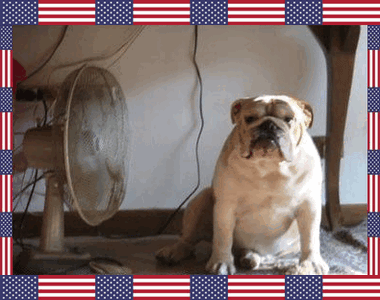
Son And Grandson Of Striker.
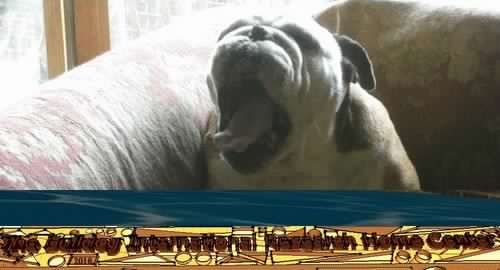
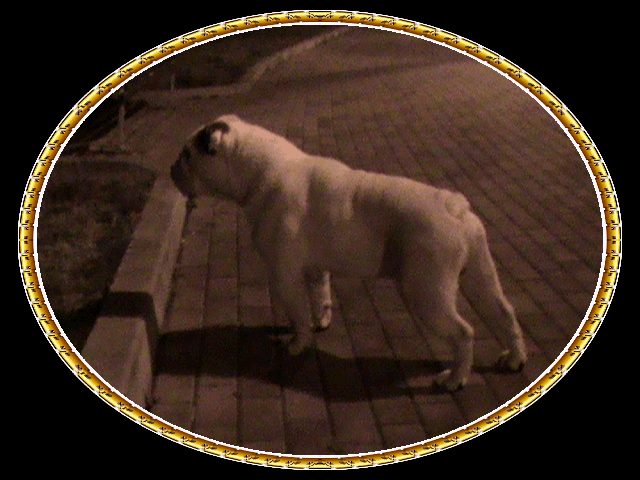
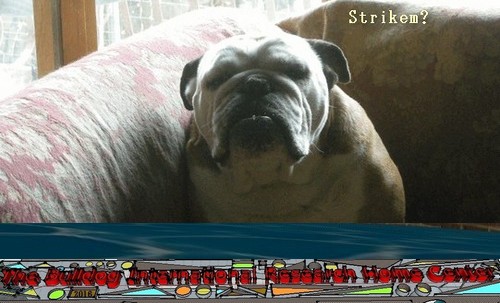
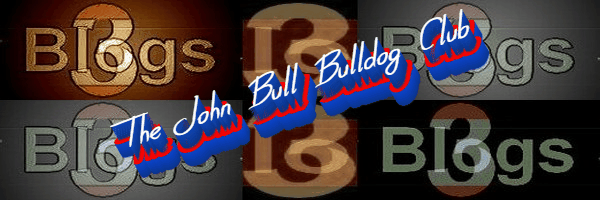

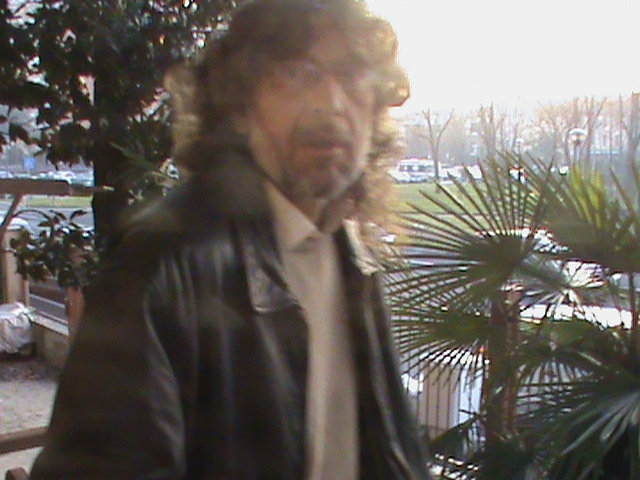 CONTACT: originalbulldogclub@gmail.com
CONTACT: originalbulldogclub@gmail.com


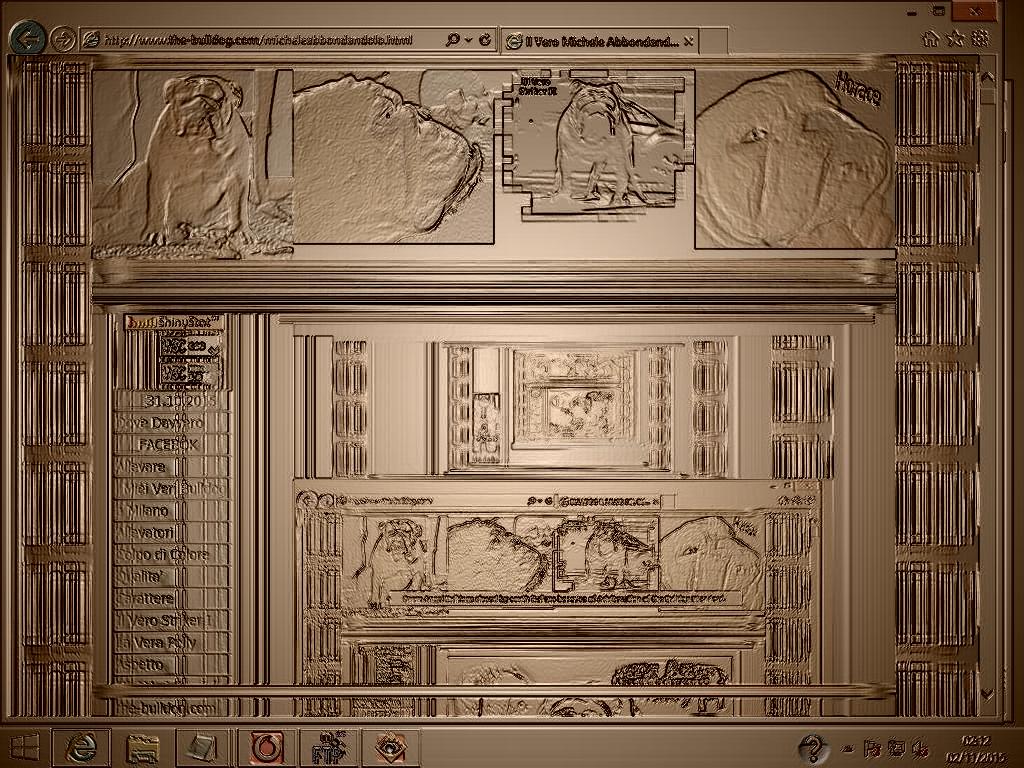
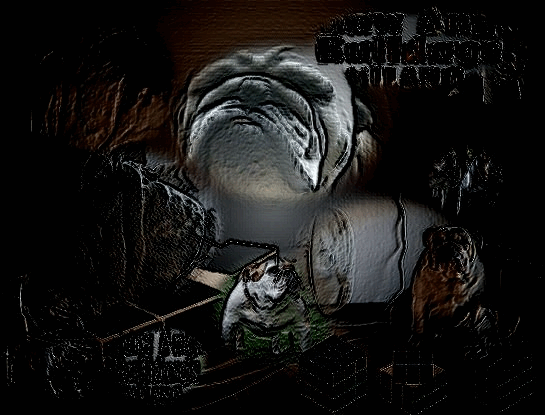


Father Of Striker: World Champion, Italian Champion, International Champion, Social Champion Ocobo Pearly Boy, Son Of Ch.Ocobo Tully. Mother: Tuffnuts Snow Angel, Daughter Of Ch. Tuffnuts Striker, Son Of Living Legend
Kiwies New Zealander British Bulldog Breeders
The Breeding of animals is well developed in New Zealand & is related also to very rare aboriginal, autochthonous animals from New Zealand protected by the Rare Breeds Conservation Society of New Zealand. There are lots of repurable, accredited & recommended British Bulldog Breeders in New Zealand. Citizens from New Zealand uses English Language to communicate. Looking for a British bulldog breeder in New Zealand, the New Zealand Kennel Club, also named NZKC is the oficial kenel club of New Zealand responsible for all dog & related canine registration where to find accredited British Bulldog Breeders, NZKC must not be confounded with the NZSBA, New Zealand Standardbred Breeders' Association that was established in 1973 to actively promote the best interests of breeders & owners in all matters of Harness Racing & with the NZPBRA, the New Zealand Plant Breeding & Research Association Inc whose membership comprises the major developers of plant varieties for the New Zealand. Among the Breeder Associations of New Zealand is worthy of mention The New Zealand Sheep Breeders Association that administers the affairs for those breeds of sheep currently under its umbrella whilst actively promoting the stud breeding sheep industry. The New Zealand Sheep Breeders Association is working to improve sheep breeds, maintain their purity, collect pedigree information, & encourage the use of performance records & also is worthy of mention The Brown Swiss Cattle Breeders Association of New Zealand.
New Zealand, is divided in the following regions:
Northland,
Auckland,
Waikato,
Bay of Plenty,
Hawke's Bay,
Taranaki,
Whanganui Manawatu,
Wellington,
Marlborough,
Nelson / Tasman,
West Coast,
Canterbury,
Otago,
Southland.
New Zealand Cities & Towns are :
Auckland, Wellington, Christchurch, Queenstown, Palmerston North, Hamilton, Upper Hutt, Lower Hutt, Rotorua, Napier, Hastings, Nelson, Blenheim, Taupo, Kerikeri, Greytown, Tauranga, Picton, Taihape, Whakatane, Porirua, Russell, New Plymouth,Paeroa.
I suggest the following list of bulldog breeders:
Bull Estate british Bulldogs are a Bulldog Breeding of Peter & Lyn Janssen located in Waikato, the Bull Estate website is http://www.bullestate-bullmastiff-bulldog.net, the email address is bullestate@paradise.net.nz.
This new zealander accredited british bulldog breeders pointed their british bulldog breeding program on correct type & temperament & above all soundness, they are specialized in British Buldog Puppies & Stud Bulldogs belonging by Australian, Britannic & New Zealander bloodlines
Brindsen british Bulldogs are a recommended New Zealander Bulldog Breeding in Auckland, the british bulldog breeder name is Louise Burgess & he bred bulldogs for quality & quantity & health. The bulldog website is http://www.brinsdenbulldogs.com & the breeder email is brinsdenbulldogs@yahoo.co.nz.
Southbull british Bulldogs is a reputable New zealander bulldog breeding situated at Christchurch, the british bulldog breeder is Faye Botherway the email address is fayeb@xtra.co.nz
Titan british bulldogs are an accredited british bulldog breeding situated in Wellington, the owners are Scott & Loretta Lovell, they are specialized in stud bulldogs of the most prized bloodlines.
Mattbridge british Bulldogs are british breeding bulldogs in Auckland following the british bulldog breeding program of the breeder Amanda Rutherford whose website is http://www.mattbridgekennels.com, the email address is nrutherford@xtra.co.nz. Mattbridge Bulldogs is a old british bulldog breeding with more than twenty years of experience in English, New Zealand & Australian bloodlines.
Bullrush british Bulldogs are by Dylan Anderson & located in Ardmore, Auckland, email address is D-Anderson@slingshot.co.nz, the bulldog website address is http://www.wix.com/bullrushshowkennel/bullrush, their british bulldog breeding program is addressed chiefly to bulldog conformation & bulldog character,
Stonewall british Bulldogs are located in Wellington is a british bulldog breeding off Frank Muncey whose website & email are http://www.mydogweb.co.nz/stonewallbritishbulldogs & stone_wall@xtra.co.nz
Myredbrits-Kennels is british bulldog breeding from Christchurch, the british bulldog breeder name is Koren Sullivan whose website & email are http://www.myredbrits-kennels.com/ & myredone@hotmail.com.
Doucraan british Bulldogs are located in Palmerston North the website is http://www.doukraanbulldogs.co.nz, email address is doukraan@doukraanbulldogs.co.nz, the bulldog breeder name is Tricia Kraan. The british bulldog breeding program foresee stud british bulldogs & british bulldogs puppies with show bulldog characteristics in a familiar inprinting.
Bushypark brritish bulldogs started their british bulldog breeding program twenty years ago the british bulldog breeder name is Rodney Johnston located in Wanganui, they provide stud british bulldogs & british Bulldogs puppies.
Ndstructabul bbritish bulldogs are sutuated in North Canterbury, they bred british bulldogs in a small kennel, bulldog brreders names are Julian Thomas & Amy Scott-Thomas, Email address is ndstructabul@mail.com & website address is http://www.ndstructabul.co.nr
Lechien britishh bulldogs are breeding in Te Kuiti, the owner of the british bulldog kennel is Sue Tahere, email is stfb@xtra.co.nz
Nexen british Bulldogs are selecting british bulldogs in North Island the accredited british bulldog brreder name is Selena Skinner her email address is nexenbulldogs@live.com & nexenbulldogs@clear.net.nz. Nexen british Bulldog programs has the purpose to grow bulldog puppies for bulldog shows, raising champion bulldogs.
Turanga britissh bulldogs are raising puppies in small breeding in Auckland, british bulldogs are bred by Hayley Kitchener, hailz100@hotmail.com
Brigadier briitish bulldogs are growing & showing buldog pupies in Auckland, email brigadier@slingshot.co.nz, website on british bulldogs is http://www.brigadierbulldogsnz.webs.com/. British Bulldogs are bred by Michelle Polwarth in a small farm. The characteristics of the Brigadier british bulldogs are the personality & the show buldogs type.
Canute brittish Bulldogs are breeding bulldogs providing British Bulldog Puppies for Sale from British Bulldog breeders since 1968, establishing british bulldog bloodlines from imported bulldog stock, email is willdo@clear.net.nz, british Bulldogs are bred by Mr. Hazel.
TBY english bulldogs are a small breeding located in North auckland, email is diqiu_520@hotmail.com, british bulldog puppies are raised by Leo Yang.
Sittingbull english Bulldoggs are selected & raised at home by Mr. Kay in Auckland, email is Sittingbull_kennel@hotmail.com, website is http://www.sittingbullnz.com
Rinkhals english Bull dogs are raised in a small home based breedings since 1986 pproducing few & selected english bulldog litters. Websites ob bulldogs www.rinkhalsbulldogsnz.weebly.com & http://rinkhalsbulldogs.tripod.com/. Rinkhals english Bulldogs are located in Christchurch, email address is rinkhals.bulldogs@clear.net.nz. Rinkhals Bulldogs are by Kathy Brown.
Kaitake english Buldogs are bred by Marea Faigan in New Plymouth, for info g.p.rollo@xtra.co.nz, Bulldog Webspace is http://gprollo.wix.com/kaitakefrenchbulldog
Cloonagh Bulldogs are provided by Kylie Taylor, the bulldogs are located in Te Puke, for information kylietaylor1@xtra.co.nz
Codera & Penclawdd Kennels are living in Waikato, the bulldog puppies are bred by Angela Stinson of Codera Kennels & Shane Paul of Penclawdd Kennels that share this schedule, email is shanesandra@xtra.co.nz.
Trimbull bulldogs are bred by Diane Harmon in Carterton, email address is dianeharmon43@yahoo.com.
Rare Animals Breedings in New Zealand
Most of Waikato’s native forest has been cleared for farming, but some remains in forest parks & on mountain ranges. Native birds are especially common in wetlands & near the coast. Endangered animals in the region include the black mudfish & Hochstetter’s frog & the threatened Te Aroha stag beetle .Plants and animals
... (swamp flax) and sedges. There are a number of rare & threatened plants in Waikato wetlands. The swamp ... it is at serious risk of becoming extinct. Birds & animals Before pasture replaced the original vegetation, the ... Forest Park there are small populations of the rare Hochstetter’s frog & the threatened Te Aroha ... Part of story: Waikato region
Alpine, wetland & coastal animals
... Island’s large kea parrot, a native pipit & a rare, tiny rock wren which, in winter, ... other living bird (except the rifleman). Other animals living high in the mountains are: alpine versions of ... also ko-ura (a small edible crayfish) &, more rarely, freshwater mussels. Insects Many insects, ... Part of story: Native plants & animals – overview
Chitons, tusk shells & rare classes
... New Zealand’s 56 species of chiton are coastal animals, but a few are known in deep water ... with a tubular, tapering shell. They are burrowing animals, living partially buried in the sea floor ... them together for necklaces & anklets. Rare classes Two rare classes of shellfish, the Monoplacophorans ... Part of story: Shellfish
Plants and animals
... the interior of the region. Native wildlife Pureora Forest is home to the rare North Island ko-kako. Other rare ... Ka-whia Harbour. The west coast is the traditional habitat of the rare Ma-ui’s dolphin. Glow-worms, the larvae of ... Waitomo district also contain fossils. Plant & animal pests Ragwort, gorse & blackberry were ...
Plants and animals
... -established. Fiordland remains a treasure chest of rare & endemic plants – including several species ... . There may also be some ka-ka-po- (rare endangered parrots) in the wild in Fiordland but ... James Cook described it as ‘that most mischievous animal’. 1 Fish Southland rivers were home ...
Native plants & animals
... Polynesian homeland of Hawaiki as timber used in the construction of the Tainui canoe. Animals & birds The region is home to a number of rare native animals, including the gold-striped gecko (found ... sea lions, as well as the introduced kuri- (dogs), kiore (Pacific rats) & even a rare native tuatara.
Impact of animals on the bush
... plants become rare, replaced by inedible species. Loss of native animals Humans, rats, ... & wasps have dramatically reduced native animal life in the bush – they have eliminated ... , saddlebacks & ko-kako disappeared from the mainland. Predatory animals severely reduced numbers of native bats ...
Climate, plants & animals
... like godwits, wrybills & oystercatchers. Humans introduced new plants & animals, some of which have devastated native species. Ma-ori introduced ... , endanger native plant & animal life today. However, protected island areas act as sanctuaries for some rare species – for instance Little Barrier Island (Hauturu) is ...
Climate, plants & animals
... . Wildlife Central Otago was once an important habitat for moa. Today it is home to smaller animals, notably skinks. The rare Cromwell chafer beetle is found ... . Coastal Otago is home to seal & penguin colonies – including the rare yellow-eyed penguin – & to the royal albatross breeding grounds ...
People, animals & plants in geothermal areas
... are more than just rocks, minerals & hot water. They are also home to unique & remarkable plants, animals & micro-organisms. Geothermal ecosystems are protected because they are so rare & easily damaged. There is also strong – & ...
Plants and animals
... such as tu-i-, bellbird, kereru-, grey warbler & fantail. Rare species include the blue duck, North Island brown ... plains of Hawke’s Bay are mainly occupied by introduced farm animals, but pockets of bush sustain native species. ... have ever lived up to their name. Animal pests The major animal pests of Hawke’s Bay – as ...
Collections of plants & animals
The first collection of native New Zealand plants & animals was made in 1769, by naturalists on James Cook’s ship the Endeavour. Collections built up ... network that keeps scientific names consistent. They also help scientists identify rare species, plan revegetation projects, & recognise unwanted plants & animals.
Climate, plants & animals
... Range & in high-altitude parts of the Sounds. Titirangi, a rare hebe, is endemic to Hokianga Harbour in Northland, ... impeded access. The impact of humans & grazing animals has accelerated erosion, forming large ... & weeping broom, are endemic to the southern zone. Animals The Marlborough green gecko is found in ma-nuka ... Part of story: Marlborough region Plants & animals
... Matiu (Somes Island) in Wellington Harbour. Until 1995 it was used as an animal quarantine station. Today it is a sanctuary for endangered species. The ... Kapiti Island (permits required for a visit) where native birds, including the rare ko-kako & takahe-, thrive. In Wellington city the Karori ... Part of story: Wellington region Plants & animals
... seaweed species found around Stewart Island occur in Paterson Inlet/ Whaka a- Te Wera. Animal life Birds prosper on the island, in large part due to the absence of ... yellow-eyed penguins) – breed. Having all three breeding on one coastline is rare. Several shag species nest on the shoreline and New Zealand fur seals breed ... Part of story: Stewart Island/Rakiura Food safety & animal welfare
... there is no nervous tissue. The part exposed to the beam drops off in one to four weeks. The earlier practice of beak tipping with a hot blade is very rarely used in New Zealand. Opponents of this practice argue that it limits hens’ ability to forage & preen, & that reducing the numbers of hens kept together would ... Zoos and aquariums
Chimp tea parties & over-heated polar bears are things of the past in New Zealand’s zoos. As attitudes have changed, zoos & aquariums have been transformed from places of entertainment to venues for breeding rare animals, & educating the public about conservation. Part of story: Zoos & aquariums Island sanctuaries
... Maud Island has pakeka frogs, which are almost as rare. Creating sanctuaries As naturalists noted with alarm the ... on Arapawa Island, in the Marlborough Sounds. Protesters claimed the animals were descendants of those left by James Cook, ... the case. DNA tests showed some were rare breeds such as the milch goat, long extinct ... Oldest fossils – Paleozoic
... had first appeared in the Cambrian & Ordovician periods. Silurian fossils are rare. They have been found in the Pikikiruna Range & Wangapeka ... New Zealand record of Carboniferous terrestrial plants & animals. Carboniferous fossils are extremely rare & are only known from north Otago (near ...
Age of the dinosaurs – Mesozoic
... Zealand continent, Zealandia, broke away, carrying with it a cargo of plants & animals, including dinosaurs. Triassic (251–200 million years ago) ... groups. Vertebrate fossils of conodonts, fish & marine reptiles are generally rare. Dinoflagellates (a type of marine plankton) first appear in ...
Terrestrial fossils
... pollen & spores, along with rare fruits, seeds, flowers & resin (amber). Animal fossils other ... Zealand’s oldest terrestrial fossils The oldest terrestrial animal fossil is Middle Triassic, about 245 million ... . Fossils of insects, including beetles, are extremely rare, yet fragments attributed to insects are commonly ...
Cattle parasites & other problems
... venerealis) causes early foetal loss, but is rare in New Zealand cattle, probably due ... widespread use of artificial insemination. Trichomonasis is also rare, but has been diagnosed more ... cattle affects milk production, fertility & animal welfare. Lameness, including bruising or abscesses ...
Blue whales and fin whales
... whale The blue whale (Balaenoptera musculus) is the largest animal ever to live. On average, adults weigh ... migrate past the New Zealand coasts, but are rarely seen close to shore. Fin whale Fin ... physalus), named for their prominent dorsal fin, are rare in New Zealand waters. The second longest of ...
Modernising zoos
... employed, including veterinarians. Staff shared their knowledge about animal welfare & zoo management in professional magazines & at conferences. Captive-breeding programmes of rare & endangered animals began. Zoos cooperated with exchanges of ...
How did they arrive?
... a male individual & a female individual to reproduce. Most animals need certain plants or prey for food, so ... New Zealand. Unlikely arrivals Many plants & animals have arrived since New Zealand ... blew to New Zealand. For animals that do not fly, only very rare & unusual events ...
Collections in New Zealand
... investigations, & less interested in identifying & describing plants & animals. With widespread government reorganisation in the 1980s & early 1990s, ... used for a variety of purposes, including: identifying rare species, & mapping their distribution historical ...
What are fossils?
... preservation varies greatly, & the optimum conditions for preservation rarely occur. How fossils are preserved When plants & animals die, they generally rot or ... in the rough limestone outcrops, particularly where the weather & rubbing animal bodies wore ledges into the rockfaces along the ...
Naturalists: 1840s–1890s
... . There was a greater awareness of the relationships between plants & animals, & their interaction with the environment. Later in the 19th century ... opportunities were declining with the loss of habitat & near extermination of rare species, some offshore islands and mountain & ...
What is a threatened species?
Low populations Threatened species are native plants & animals that are under threat of extinction. Their numbers ... as freshwater fish. The remaining habitats of many animals (for example, the Canterbury mudfish) are on private land ... may always have been quite rare, or their habitats may not have ...
Ranges, rivers & forests
... the Urewera region, sustain populations of species that are becoming increasingly rare. One of the last reliable sightings of a significant bird, the ... the forests. The survival of the ko-kako, kiwi & other native animals has been assisted by a Department of Conservation recovery programme. ...
Beaked whales
... skeletons. In the absence of any work on the behaviour of live animals, research in New Zealand concentrates on stranded ... whale (Mesoplodon layardii) has a pair of tusks. Rare beaked whales Other beaked whales which have been found rarely in New Zealand waters are the southern bottlenose whale ...
The Southern Alps & other axial ranges
... huge shingle slides, known as scree, that are an ancient feature of the mountains. Animals Insects such as cicadas, cockroaches, grasshoppers & stoneflies have ... , evolving into many species with different forms. Some animals that are rarely found in the alpine zone elsewhere in the world ...
Expeditions & surveys: 1830s–1870s
... Zealand. These explorers made major scientific discoveries of New Zealand plants & animals, in spite of being restricted to mainly coastal regions. But many important finds would be left to individuals who stayed longer, describing rare, secretive or nocturnal species.
Parasites: disease-causing fungi
... (such as brown rot in peaches). Domesticated animals are also harmed by toxic introduced fungi ... implicated in the global decline of frogs, including the rare Archey’s frog in New Zealand. A variety ... fungi, their impact on native plants & animals is largely in balance as they have co ...
New Zealand’s beetles
... 40% of known insect species, & about 30% of all animals. Estimates suggest that as many species again ... were often basic, & they were rarely illustrated. Many species were described ... Zealand’s beetles, like many of its plants & animals, are most closely related to species in Australia ...
Deep-sea and unusual sharks
... , & never come near the surface. Among these bizarre species is the rare goblin shark (Mitsukurina owstoni), which has an outlandish ... stinking carcass. After taking photos & keeping some of the decayed animal, they returned it to the depths. Speculation that it might have been a ...
Mating and distribution
... . Some stick insects produce fertile eggs without mating. Animals that reproduce without males are described as parthenogenetic. In New ... northern North Island, including Coromandel, East Cape and Northland, & are rare. Niveaphasma are only known from the South Island, where they ...
A land of birds
... moa evolved to occupy niches filled elsewhere by four-legged grazing animals. Ko-kako (wattlebirds) still run through the forest along branches ... islands’ (predator-free reserves) are the best places to see threatened, rare & endangered birds in a more natural setting. The abundance of .
Deer, goats, pigs and wasps
... feed on any forest berries, fruit or succulent stems, & any surface-dwelling animals, such as we-ta-, litter hoppers, earthworms & centipedes. With up to ... carnivores, eating mainly flies, caterpillars & spiders. They threaten the survival of some rare native insects. In late summer & autumn, wasps switch to a diet
Bottlenose dolphins
... metres (compared to 80 metres for common dolphins). Bottlenose dolphins rarely mix with other species. The Fiordland group The Doubtful Sound ... their tropical counterparts, following the general rule that the cooler the climate the bigger the animal. During autumn & winter they eat more in order to ...
Natural history of sharks and rays
... Yet the chances of being attacked are slim; in fact humans threaten these animals, particularly sharks, much more than the reverse, to such an ... , also extinct, was unearthed in North Otago in the late 1990s. It was an extremely rare find – usually only single teeth are discovered. Closely related ...
Morepork: New Zealand’s native owl
... in roosts. By night they hunt a variety of animals – mainly large invertebrates including scarab ... 20 to 30 days. During this time she rarely hunts, & the male brings food to her. ... hosts Scientists trying to establish a population of rare shore plovers on Motuora Island in the Hauraki
Conservation parks, nature & scientific reserves
... Reserve, in Canterbury’s Broken River basin, protects the habitat of the rare Castle Hill buttercup (Ranunculus crithmifolius paucifolius). In ... (10–100 hectares). They protect ecological groupings, plant or animal communities, soils & landforms for scientific study & education.
What is the kuri-?
... dog. ‘Kararehe’ was later used by Ma-ori to refer to any four-legged animal. The term ‘Ma-ori dog’ probably arose from ‘kuri- ma-ori’. But ... New Zealand (on voyages between 1770 and 1779), they probably became rare through cross-breeding with introduced dogs, & then disappeared altogether.
Protecting kauri
... survival Protection from logging has not ensured the preservation of kauri forest. Introduced animal pests threaten native plants and animals. Possums in particular compete for food with rare birds like ko-kako & predate their nests, & they strip native ..
Sealers, missionaries & botanists
... scattered around both islands. All made important discoveries of plants & animals. Sealers A sealer was probably the first European to collect a ... haastii & a family of daisies, Haastia, are named for Julius Haast. The rare Hamilton’s frog, from Stephens Island, was named for Harold Hamilton, ...
Whales in New Zealand
... of tourists to towns like Kaiko-ura. Others, such as beaked whales, are rarely seen & are known only because they beach themselves when injured or ill ... (emitting sounds to locate solid objects). Baleen whales include the largest animals ever known. Greatest of all is the blue whale; the heaviest ever .
Overview
... ranges from wetlands to kauri forest remnants, while wildlife includes some rare & endangered native birds such as the ko-kako and the New Zealand dotterel, & other animals such as giant flax & kauri snails, & the unusual Hochstetter’s ...
Featuring up-to-date information on New Zealand

Featuring up-to-date information on New Zealand attractions & hotels & estaurants & nightlife & travel tips, New Zealand is a place with many facts & experiences & adventures & open spaces & fun places & sheer beauty & attractions & tours & key events, is a wealthy Pacific nation, is dominated by two cultural groups: New Zealanders of European descent, & the minority Maori, whose Polynesian ancestors arrived on the islands around 1,000 years ago. New Zealand is known to Maori people with the name of Aotearoa
On top of their looks, the islands' rich Maori culture, passion for rugby, sheep outnumbering people, & exquisite sauvignon blanc create a country that defies even the most imaginative adventurers’ expectations. In New Zealand, adventure sports rule. This is, after all, a nation so dedicated to doing odd things with bits of rubber & plastic that it invented bungee jumping, black-water rafting & zorbing.
New Zealand’s national parks
New Zealand’s national parks are useful to discover the natural soul of the land. The real gems of New Zealand, the national parks preserve the natural heritage & forests & wildlife & landscapes, close to, & in some cases, exactly, as it was before man was here.
The New Zealand North Island National Parks are:
Te Urewera, most famous for its remote, rugged forest & lakes, it includes the Lake Waikaremoana Great Walk.
Tongariro, a dual World Heritage area & a place of extremes & surprises; featuring active volcanoes & the Tongariro Northern Circuit Great Walk.
Whanganui, Tramping tracks through wild lowland forests & river trips down the mighty Whanganui are popular activities.
Egmont, Dominated by the 2518m high volcanic peak of Mt Taranaki, also known as Mt Egmont, which offers a challenging climb & spectacular views.
The New Zealand South Island National Parks are:
Abel Tasman, known as the finest coastal walk in the country with golden beaches & sculptured granite cliffs surrounded by diverse native forest. Featuring the Abel Tasman Coast Track Great Walk.
Kahurangi, covering the West Coast at the top of the South Island it includes the Heaphy Track, the longest of the country’s Great Walks.
Nelson Lakes, protects the northern-most Southern Alps & offers tranquil beech forest & craggy mountains & clear streams & lakes both big & small.
Westland Tai Poutini, extends from the highest peaks of the Southern Alps to the rugged & remote beaches of the wild West Coast.
Mount Aspiring, straddling the southern end of the Southern Alps it’s a walker's paradise & a must for mountaineers. The three largest of 100 glaciers in the region flank Mount Aspiring itself.
Fiordland, one of the great wilderness areas of the Southern Hemisphere with The Kepler, Milford & Routeburn tracks, each highlighting different aspects of this spectacular park.
Paparoa, most famous for the Pancake Rocks & blowholes of Dolomite Point, near the settlement of Punakaiki.
Arthur's Pass, a park of contrasts, with dry beech/tawhai forest in the east & luxuriant rainforest on western slopes.
Aoraki/Mount Cook, new Zealand's great alpine park with the highest mountains & the largest glaciers.
Rakiura National Park, explore pristine beaches & sheltered inlets & coastal forest & see seals & penguins & kiwi & weka & many other birds. Makes up about 85 percent of Stewart Island/Rakiura.
Ma-ori words every New Zealander should know
While as a nation Kiwis stand united, at a regional level there are many differences, in climate & economic drivers & culture.
Temperance was one of the most divisive social issues in late-19th and early-20th century New Zealand. Social reformers who argued that alcohol fuelled poverty, ill health, crime and immorality nearly achieved national prohibition in a series of hotly contested referendums.
On the first Tuesday in November every year, at 5 p.m. (NZ time), New Zealand and Australia come to a standstill for about 3 minutes and 20 seconds for the call of the Melbourne Cup. Relive some of New Zealand's greatest triumphs in ‘the race that stops a nation.
The following chapter is dedicated to the 100 Ma-ori words every New Zealander should know
These words are grouped according to the following functions and associations:
the marae
concepts
people and their groups
components of place names
greetings
body parts
The marae
Hui a meeting of any kind, conference, gathering
Marae the area for formal discourse in front of a meeting house or applied to a whole marae complex, including meeting house, dining hall, forecourt, etc.
Haere mai! Welcome! Enter!
Nau mai! Welcome!
Tangihanga funeral ceremonies, when body is mourned on a marae
Tangi short (verbal version) for the above (gerund) or to cry, to mourn
Karanga the ceremony of calling to the guests to welcome them to enter the marae
Manuhiri guests, visitors
Tangata whenua original people belonging to a place, local people, hosts
Whaiko-rero the art and practise of speech making
Kaiko-rero or kaiwhai ko-rero speaker (there are many other terms)
Haka chant with dance for the purpose of challenge; (see other references to haka on this site)
Waiata song or chant which follows speech
Koha gift, present (usually money, can be food or precious items, given by guest to hosts)
Whare nui meeting house; in writing this is sometimes run together as one word – wharenui
Whare whakairo carved meeting house
Whare kai dining hall
Whare paku lavatory, toilet
Whare horoi ablution block, bathroom
Concepts
Aroha compassion, tenderness, sustaining love
Ihi power, authority, essential force
Mana authority, power; secondary meaning: reputation, influence
Manaakitanga respect for hosts or kindness to guests, to entertain, to look after
Mauri hidden essential life force or a symbol of this
Noa safe from tapu (see below), non-sacred, not tabooed
Raupatu confiscate, take by force
Rohe boundary, a territory (either geographical or spiritual) of an iwi or hapu-
Taihoa to delay, to wait, to hold off to allow maturation of plans, etc.
Tapu sacred, not to be touched, to be avoided because sacred, taboo
Tiaki to care for, look after, guard (kaitiaki – guardian, trustee)
Taonga treasured possessions or cultural items, anything precious
Tino rangatiratanga the highest possible independent chiefly authority, paramount authority, sometimes used for sovereignty
Tu-rangawaewae a place to stand, a place to belong to, a seat or location of identity
Wehi to be held in awe
Whakapapa genealogy, to recite genealogy, to establish kin connections
Whenua land, homeland, country; also afterbirth, placenta
People and their groups
Ariki person of high inherited rank from senior lines of descent, male or female
Hapu- clan, tribe, independent section of a people; modern usage – sub-tribe; pregnant
Iwi people, nation; modern usage – tribe; bones
Kauma-tua elder or elders, senior people in a kin group
Nga-i Ta-tou a way of referring to everyone present – we all
Pa-keha- this word is not an insult; its derivation is obscure; it is the Ma-ori word for people living in New Zealand of British/European origin; originally it would not have included, for example, Dalmatians, Italians, Greeks, Indians, Chinese, etc.
Rangatira person of chiefly rank, boss, owner
Tama son, young man, youth
Tama-hine daughter
Tamaiti one child
Tamariki children
Ta-ne man, husband, men, husbands
Teina/taina junior relative, younger brother of a brother, younger sister of a sister
Tipuna/tupuna ancestor
Tuahine sister of a man
Tuakana senior relative, older brother of a brother, older sister of a sister
Tunga-ne brother of a sister
Wahine woman, wife (wa-hine women, wives)
Waka canoe, canoe group (all the iwi and hapu- descended from the crew of a founding waka)
Wha-ngai fostered or adopted child, young person
Wha-nau extended or non-nuclear family; to be born
Whanaunga kin, relatives
Components of place names
Ordinary geographical features such as hills, rivers, cliffs, streams, mountains, the coast and adjectives describing them, such as small, big, little and long, are to be found in many place names. Here is a list so you can recognise them:
Au current
Awa river
Iti small, little
Kai one of the meanings of kai is food; in a place name it signifies a place where a particular food source was plentiful, e.g., Kaiko-ura, the place where crayfish (ko-ura) abounded and were eaten
Ma-nia plain
Manga stream
Maunga mountain
Moana sea, or large inland 'sea', e.g., Taupo-
Motu island
Nui large, big
o- or o means 'of' (so does a, a-); many names begin with o-, meaning the place of so-and-so, e.g., o-kahukura, o-kiwi, o-hau, etc.
One sand, earth
Pae ridge, range
Papa flat
Poto short
Puke hill
Roa long
Roto lake; inside
Tai coast, tide
Wai water
Whanga harbour, bay
Greetings
E noho ra- Goodbye (from a person leaving)
Haere ra- Goodbye (from a person staying)
Haere mai Welcome!, Come!
Hei kona- ra- Goodbye (less formal)
Kia ora Hi!, G'day! (general informal greeting)
Mo-rena (Good) morning!
Nau mai Welcome! Come!
Te-na- koe formal greeting to one person
Te-na- ko-rua formal greeting to two people
Te-na- koutou formal greeting to many people
Te-na- ta-tou katoa formal inclusive greeting to everybody present, including oneself
Body parts
Arero tongue
Ihu nose
Kaki- neck
Kauae, kauwae chin
Ko-pu- womb
Ma-hunga also 'Makawe', hair (when used for hair must always be used in plural, indicated by nga- [the, plural]), head.
Manawa heart
Niho teeth
Poho chest (also called uma)
Puku belly, stomach
Raho testicles
Ringa hand, arm
Toto blood
Tou anus
Turi knee (also known as pona)
Tu-tae excrement, ordure
u- breast (breast-milk is wai-u-)
Upoko head
Ure penis
Waewae foot, feet, leg, legs
A note on pronunciation
The following English equivalents are a rough guide to pronouncing vowels in Ma-ori:
a as in far
e as in desk and the first 'e' in where; it should be short and sharp
i as in fee, me, see
o as in awe (not 'oh!')
u as in sue, boot
There are fewer consonants, and only a few are different from English:
r should not be rolled. It is pronounced quite close to the sound of 'l' in English. The tongue is near the front of the mouth.
t is pronounced more like 'd' than 't', with the tip of the tongue slightly further back from the teeth
wh counts as a consonant; the standard modern pronunciation is close to the 'f' sound; in some districts it is more like an 'h'; in others more like a 'w' without the 'h'; in others again more like the old aspirated English pronunciation of 'wh' (huence for whence)
ng counts as one consonant and is pronounced like the 'ng' in the word 'singer'. It is not pronounced like the 'ng' in 'finger', i.e., Wha-nga-rei is pronounced Far-n(g)ah-ray (not Fong-gah-ray); Tauranga is pronounced Tow- (to rhyme with sew) rah-n(g)ah (not Tow-rang-gah).
The macron – a little line above some vowels – indicates vowel length. Some words that look the same have different meanings according to their vowel length. For example, ana- means 'here is' or 'behold': Ana- te tangata! (Here is the man!) But ana, with no macron, means a cave. Some writers of modern Ma-ori double the vowel instead of using macrons when indicating a long vowel, so the first example would be Anaa te tangata!
Using te reo in email (and snail mail)
We have put together this guide to help people learn appropriate email greetings and sign-offs in te reo Ma-ori.
We have listed some of the most commonly used phrases below. We encourage you to add any others you have received or any other questions you have as community contributions below this post, or email us at info@nzhistory.net.nz.
Generic greetings suitable for most occasions
Formal for one person (eg where in English you might have used 'Dear'): Te-na- koe
Informal: Kia ora
When addressing two people
Formal: Te-na- ko-rua
Informal: Kia ora ko-rua
When addressing more than two people
Formal: Te-na- koutou
Informal: Kia ora koutou
Generic sign offs suitable for most occasions
Formal:
Na-ku (noa), na- [your name] = yours sincerely [your name] from one person
Na- ma-ua (noa), na- [your names] = yours sincerely [your names] - from two people
Na- ma-tou (noa), na- [your names or group name] = yours sincerely [your names or group name] - from more than two people
Adding 'noa' in the above examples adds a sense of humility - eg 'Na-ku, na-' is 'From [your name]' whereas 'Na-ku noa, na- is more like 'It's just [your name]'
Informal:
Hei kona- mai (or just Hei kona-)
Other greetings and signoffs
Please provide more examples from emails you have received as community contributions at the bottom of this page or email us at info@nzhistory.net.nz
If morning, an informal greeting could be: Mo-rena (good morning - an alternative is 'Ata ma-rie' )
Kia ora e hoa (informal greeting to a friend)
If someone greets you with: Te-na- koutou e hoa ma-
An appropriate response would be: Te-na- koe, e hoa (or, less formally, Kia ora e hoa).
The sign off: Noho ora mai ra-, na- ... is: Look after yourself, from ...
For Christmas:
Meri Kirihimete - Merry Christmas
Nga- mihi o te Kirihimete me te Tau Hou - Seasons greetings for Christmas and the New Year.
Meri Kirihimete ki a koe/ko-rua/koutou - Merry Christmas to you (1 person) / you (2 people) / you (3 or more people).
Nga- mihi o te Kirihimete ki a koe/ko-rua/koutou - Greetings of the Christmas season to you (1 person) / you (2 people) / you (3 or more people).
Aspects of Recristallization in Ancient Limestones
ROBERT L. FOLK
University of Texas, Austin
REFERENCES
Banerjee, A., 1959, Petrography and facies of some upper Viséan (Mississippian) limestones in North Wales: Jour. Sedimentary Petrology, v. 29, p. 377–390.
Banner, F. T. and Wood, George, 1964, Recrystallization in microfossiliferous limestones: Geol. Jour.v. 4, p. 21–34.
Bathurst, R. G. C., 1958, Diagenetic fabrics in some British Dinantian limestones: The Liverpool and Manchester Geol. Jour., v. 2, p. 11–36.
Bathurst, R. G. C., 1959a, The cavernous structure of some Mississippian Stromatactis reefs in Lancashire, England: Jour. Geology, v. 67, p. 506–521.
Bathurst, R. G. C., 1959b, Diagenesis in Mississippian calcilutites and pseudobreccias: Jour. Sedimentary Petrology, v. 29, p. 365–376.
Beales, F. W., 1956, Conditions of deposition of Palliser (Devonian) limestone of Southwestern Alberta: Am. Assoc. Petroleum Geologists Bull., v. 40, p. 848–870.
Beck, Paul A., 1952a, Do metals recrystallize?: Jour. Metals (AIMME), v. 4, p. 979–980.
Beck, Paul A., 1952b, Interface migration in recrystallization: in Metal Interfaces, Am. Soc. Metals, 33rd National Metal Congr. (Detroit), p. 208–247.
Beck, Paul A., Kremer, Joseph C., Dewer, L. J., and Holzworth, M. L., 1948, Grain growth in high-purity aluminum and in an aluminum-magnesium alloy: Trans. AIMME, Inst. of Metals, v. 175, p. 372–394.
Bergenback, R. E., and Terriere, R. T., 1953, Petrography and petrology of Scurry Reef, Scurry County, Texas: Am. Assoc. Petroleum Geologists Bull., v. 37, p. 1014–1029.
Black, Maurice, 1953, Constitution of the chalk: Proc. Geol. Soc. London, Session 1952–53, no. 1499, p. lxxxi-lxxxii.
Black, Maurice, 1962, Fossil coccospheres from a Tertiary outcrop on the continental slope: Geol. Mag., v. 99, p. 123–127.
Black, Maurice, and Barnes, Barbara, 1959, The structure of coccoliths from the English chalk: Geol. Mag., v. 96, p. 321–328.
Bogardus, Egbert Hal, 1957, Lower Pennsylvanian of the Richland Springs area, San Saba County, Texas: Unpublished M.A. thesis, Univ. of Texas, 159 p.
Bragg, L. and Nye, J. F., 1947, A dynamical model of a crystal structure: Proc. Royal Soc. London, Ser. A, v. 190, p. 474–487.
Bramlette, M. N., 1958, Significance of coccolithophoridae in calcium carbonate deposition: Geol. Soc. Am. Bull, v. 69, p. 121–126.
Buckley, H. E., 1951, Crystal Growth: Chapman and Hall, London, 571 p.
Buerger, M. J. and Washken, E., 1947, Metamorphism of minerals: Am. Mineralogist, v. 32, p. 296–308.
Burke, J. E., 1949, The fundamentals of recrystallization and grain growth: in Grain Control in Industrial Metallurgy, Am. Soc. Metals, p. 1–73.
Burke, J. E., and Turnbull, D., 1952, Recrystallization and grain growth: Progr. Metal Phys., v. 3, p. 220–292.
Carpenter H. C. H., and Elam, Constance F., 1920, Crystal growth and recrystallization in metals: Jour. Inst. Metals, v. 2, p. 83–131.
Chalmers, Bruce, 1959, Physical Metallurgy: John Wiley and Sons, New York, 468 p.
Chanda, S. K., 1963, Cementation and diagenesis of the Lameta beds, Lametaghat, M. P., India: Jour. Sedimentary Petrology, v. 33, p. 728–739.
Cloud, Preston A., 1960, Gas as a sedimentary and diagenetic agent: Am. Jour. Science, v. 258-A (Bradley vol.), p. 35–45.
Cloud, Preston A., 1962. Environment of calcium carbonate deposition west of Andros Island, Bahamas: U.S. Geol. Sur. Prof. Paper 350.
Cottrell, A. M., 1955, Theoretical Structural Metallurgy: Edmond Arnold, London, 251p.
Crickmay, Geoffrey W., 1945, Petrography of limestones: In Ladd, Harry S., and Hoffmeister, J. Edward, Geology of Lau, Fiji, Bernice Pahoihe Bishop Museum Bull. 181, p. 211–242.
Cullis, C. Gilbert, 1904 . The mineralogical changes observed in the cores of the Funafuti Borings: Coral Reef Report, The Atoll of Funafuti, Section XIV, p. 392–420, Royal Soc. London.
Desch, Cecil H., 1919. The solidification of metals from the liquid state: Jour. Inst. of Metals, v. 22, p. 241–263.
Desch, Cecil H., 1937, Metallography: Longmans, Green and Co., London, 402p.
Dixon, Edward E. L., and Vaughan, Arthur, 1911, The Carboniferous succession in Gower (Glamorganshire), with notes on its fauna and conditions of deposition: Geol Soc. London, Quart. Jour., v. 67, p. 477–571.
Dunham, Robert J., 1962, Classification of carbonate rocks according to depositional texture: in Classification of Carbonate Rocks, (Ham, W. E., editor) Am. Assoc. Petroleum Geologists Mem. 1, p. 108–121.
Folk, Robert L., 1959a, Practical petrographic classification of limestones: Am. Assoc. Petroleum Geologists Bull., v. 43, p. 1–38.
Folk, Robert L., 1959b, Thin section examination of pre-Simpson Paleozoic rocks: in Stratigraphy of the Pre-Simpson Paleozoic Subsurface Rocks of Texas and Southeast New Mexico, Univ. Texas Bur. Econ. Geol. Publ. 5924, p. 95–130.
Folk, Robert L., 1962a, Petrography and origin of the Silurian Rochester and McKenzie shales, Morgan County, West Virginia. Jour. Sedimentary Petrology, v. 32, p. 539–578.
Folk, Robert L., and Weaver, Charles Edward, 1952, A study of the texture and composition of chert: Am. Jour. Science, v. 250, p. 498–510.
Fullman, R. L., 1952, Boundary migration during grain growth: in Metal Interfaces, Am. Soc. Metals, 33rd National Metal Congr., (Detroit), p. 179–207.
Garrels, R. M. and Dreyer, R. M., 1952, Mechanism of limestone replacement at low temperatures and pressures: Geol. Soc. Am. Bull., v. 63, p. 325–380.
Gee, Haldane, 1932, Preliminary experiments in precipitation by removal of carbon dioxide under aseptic conditions: Bull. Univ. California. Scripps Inst. Oceanography, Tech. Ser. 3, p. 180–187.
Ginsburg, Robert N., 1953, Beachrock in South Florida: Jour. Sedimentary Petrology, v. 23, p. 85–92.
Ginsburg, Robert N., 1957, Early diagenesis and lithification of shallow-water carbonate sediments in South Florida: in Regional Aspects of Carbonate Deposition (Leblanc, R. J. and Breeding, J. G., editors), Soc. Econ. Paleontologists and Mineralogists Spec. Publ. no. 5, p. 80–100.
Goodchild, J. G., 1890, The paste of limestones: Geol. Mag., v. 7, p. 73–79.
Graf, Donald L., and Lamar, J. E., 1950, Petrology of Fredonia Oolite in Southern Illinois: Am. Assoc. Petroleum Geologists Bull., v. 34, p. 2318–2336.
Greaves, Richard Henry, and Wrighton, Harold, 1933, Practical Microscopical Metallography: `D. Van Nostrand Co., New York, 256p.
Greenwood, J. Neill, 1940, Glossary of Metallographic Terms: Taft Publishing Co., Melbourne, 80p.
Griggs, David T., Paterson, M. S., Heard, H. C., and Turner, F. J., 1960, Annealing recrystallization in calcite crystals and aggregates: in Rock Deformation, (Griggs, D. T., and Handin, J., editors), Geol. Soc. Amer. Memoir 79, p. 21–37.
Griggs, David T., Paterson, M. S., Turner, F. J., and Heard, H. C., 1960, Deformation of rocks at 500° to 800°C: in Rock Deformation, (Griggs, D. T., and Handin, J., editors), Geol. Soc. Amer. Memoir 79, p. 39–104.
Guy, Albert G., 1951, Elements of Physical Metallurgy: Addison Wesley Press, Cambridge, Mass., 293 p.
Hadding, Assar, 1958, Origin of the lithographic limestones: Kungl. Fysiografiska Sällskapets I Lund Förhandlingar, Bd. 28, Nr. 4, p. 21–32.
Harbaugh, John W., 1960, Petrology of marine bank limestones of Lansing group (Pennsylvanian), Southeast Kansas: State Geol. Sur. Kansas Bull., v. 142, part 5, p. 189–234.
Harbaugh, John W., 1961, Relative ages of visibly crystalline calcite in late Paleozoic limestones: State Geol. Sur. Kansas Bull., v. 152, part 4, p. 91–126.
Harker, David, and Parker, E. A., 1945, Grain shape and grain growth: Trans. Amer. Soc. Metals, v. 34, p. 156–201.
Hathaway, Tohn C., and Robertson, Eugene C., 1961, Microtexture of artificially consolidated aragonitic mud: U.S. Geol. Sur. Prof. Paper, 424-C, p. C301–C304.
Hausner, H. H., 1956, Grain growth during sintering: Symposium on Powder Metallurgy (for 1954), Spec. Rep. Iron and Steel Inst., , no. 58, p. 102–112.
Hay, William W., Towe, Kenneth M., and Wright, Ramil C., 1963, Ultramicrostructure of some selected foraminiferal tests: Micropaleontology, v. 9, p. 171–195.
Holmes, Arthur, 1928, The Nomenclature of Petrology: Thomas Murby and Co., London.
Hoskin, Charles M., 1962, Recent carbonate sedimentation on Alacran Reef, Yucatan, Mexico: Unpublished Ph.D. dissertation, Univ. Texas.
Hoskin, Charles M., 1963, Recent carbonate sedimentation on Alacran Reef, Yucatan, Mexico: National Academy Science-National Research Council Publ. 1089.
Hudson, John D., 1962, Pseudo-pleochroic calcite in recrystallized shell-limestones: Geol. Mag., v. 99, p. 492–500.
Judd, John W., 1908, Henry Clifton Sorby and the birth of microscopical petrology: Geol. Mag., v. 5, p. 193–204.
Kaisin, Felix, 1926, Les Roches du Dinantian de Belgique: Rep. 13th Int. Geol. Congr. (1922), Fasc. 3, part 5, sujet7, p. 1237–1269.
Kelvin, Sir William Thomson (Lord), 1887, On the division of space with minimum partitional area: Phil. Mag., ser. 5, v. 24, p. 503–514.
Lees, Alan, 1964, The structure and origin of the Waulsortian (Lower Carboniferous) “reefs” of west-central Eire: Phil. Trans. Royal Soc. London, Ser. B., no. 740, v. 247, p. 483–531.
Lewis, F. T., 1925, A further study of the polyhedral shapes of cells: Proc. Am. Academy Arts and Sciences, v. 61, p. 1–34.
Lindgren, Waldemar, 1918, Volume changes in metamorphism: Jour. Geology, v. 26, p. 542–555.
Lindgren, Waldemar, 1925, Metasomatism: Geol. Soc. Am. Bull., v. 36, p. 247–262.
Lowenstam, Heinz A., 1955, Aragonite needles secreted by algae and some sedimentary implications: Jour. Sedimentary Petrology, v. 25, p. 270–272.
Lowenstam, Heinz A., 1963, Biologic problems relating to the composition and diagenesis of sediments: in The Earth Sciences (Donnelly T. W., editor), Rice Univ. Semicentennial Publ., p. 137–195.
Lowenstam, Heinz A., and Epstein, S., 1957, On the origin of sedimentary aragonite needles of the Great Bahama Bank: Jour. Geology, v. 65, p. 364–375.
Lucia, F. Jerry, 1962, Diagenesis of a crinoidal sediment: Jour. Sedimentary Petrology, v. 32, p. 848–866.
Macior, W. A., and Matzke, Edwin B., 1951, An experimental analysis of cell-wall curcatures, and approximations to minimal tetrakaidecahedra in the leaf parenchyma of Rhoeo discolor: Am. Jour. Botany, v. 38, p. 783–793.
Marvin, J. W., 1939, The shape of compressed lead shot and its relation to cell shape: Am. Jour. Botany, v. 26, p. 280–288.
Matzke, Edwin B., 1939, Volume-shape relationships in lead shot and their bearings on cell shapes: Am. Jour. Botany, v. 26, p. 288–295.
Matzke, Edwin B., 1946, The three-dimensional shape of bubbles in foam—an analysis of the role of surface forces in three-dimensional cell shape determination: Am. Jour. Botany, v. 33, p. 58–80.
Maxwell, W. G. H., 1962, Lithification of carbonate sediments in the Heron Island Reef, Great Barrier Reef: Jour. Geol. Soc. Australia, v. 8, pt. 2, p. 217–238.
McLean, Donald, 1957, Grain Boundaries in Metals: Clarendon Press, Oxford.
Mehl, R. F., 1948, Recrystallization: in Am. Soc. Metals Handbook, p. 259–263.
Muir, R. O. and Walton, E. K., 1957, The east Kirkton limestone: Trans. Geol. Soc. Glasgow, v. 22, p. 157–168.
Nabarro, F. R. N., 1940, The influence of elastic strain on the shape of particles segregating in an alloy: Proc. Phys. Soc. London, v. 52, p. 90–93.
Nelson, Henry F., 1959, Deposition and alteration of the Edwards limestone, Central Texas: in Symposium on Edwards Limestone in Central Texas (Lonsdale, J. T., editor), Univ. Texas Bur. Econ. Geol. Publ. 5905, p. 21–95.
Newell, Norman D., 1955, Depositional fabric in Permian reef limestones: Jour. Geology, v. 63, p. 301–309.
Newell, Norman D., Rigby, J. Keith, Fischer, Alfred G., Whiteman, A. J., Hickox, John E., and Bradley, John S., 1953, The Permian reef complex of the Guadalupe Mountains region, Texas and New Mexico: San Francisco: W. H. Freeman.
Newell, Norman D., and Rigby, J. Keith, 1957, Geological studies on the Great Bahama Bank: in Regional Aspects of Carbonate Deposition (Leblanc, R. J. and Breeding, J. G. editors), Soc. Econ. Paleontologists and Mineralogists Spec. Publ. no. 5, p. 15–79.
Niggli, Paul, 1954, Rocks and Mineral Deposits: W. H. Freeman, San Francisco, 559 p.
Orme, G. R., and Brown, W. W. M., 1963. Diagenetic fabrics in the Avonian limestones of Derbyshire and North Wales: Proc. Yorkshire Geol. Soc, v. 34, p. 51–66.
Philcox, Michael E., 1963, Banded calcite mudstone in the lower Carboniferous “reef” knolls of the Dublin basin, Ireland: Jour. Sedimentary Petrology, v. 33, p. 904–913.
Pray, Lloyd C., 1958, Fenestrate bryozoan core facies, Mississippian bioherms, southwestern United States: Jour. Sedimentary Petrology, v. 28, p. 261–273.
Pray, Lloyd C., 1960, Compaction in calcilutites (abstract): Geol. Soc. Am. Bull., v. 71, p. 1946.
Purdy, Edward G. 1963, Recent calcium carbonate facies of the Great Bahama Bank; 2. Sedimentary Facies: Jour. Geology, v. 71, p. 472–497.
Reed, Everett L., 1929, Photomicrographs of Iron and Steel: New York: John Wiley and Sons.
Richards, H. C., and Hill, Dorothy, 1942, Great Barrier Reef bores, 1926 and 1937—Description, analyses and interpretations: Reports of the Great Barrier Reef Committee, v. 5, p. 1–122.
Ross, Charles A. and Oana, Shinya, 1961, Late Pennsylvanian and early Permian limestone petrology and carbon isotope distribution, Glass Mountains, Texas: Jour. Sedimentary Petrology, v. 31, p. 231–244.
Samans, Carl H., 1950, Engineering Metals and their Alloys: Macmillan Co., New York, 913 p.
Schlanger, Seymour O., 1963, Subsurface geology of Eniwetok Atoll: U.S. Geol. Sur. Prof. Paper 260-BB.
Schlanger, Seymour O., 1964, Petrology of the limestones of Guam: U.S. Geol. Sur. Prof. Paper 403-D, 52 p.
Schwarzacher, W., 1961, Petrology and structure of some Lower Carboniferous reefs in northwestern Ireland: Am. Assoc. Petroleum Geol. Bull., v. 45, p. 1481–1503.
Seeliger, Robert, 1956, Übermikroskopische Darstellung dichter Gesteine mit Hilfe von Oberflächenab-drucken: Geol. Rundschau, Bd. 95, H. 2, p. 332–336.
Seigerman, Norman, 1951, Three-dimensional cell shape in coconut endosperm: Am. Jour. Botany, v. 38, p. 811–823.
Shearman, D. J., Khouri, J., and Taha, S., 1961, On the replacement of dolomite by calcite in some Mesozoic limestones from the French Jura: Geol. Assoc. London Proc., v. 72, p. 1–12.
Shoji, Rikii, and Folk, Robert L., 1964, Surface morphology of some limestone types as revealed by electron microscope: Jour. Sedimentary Petrology, v. 34, p. 144–155.
Skeats, E. W., 1903, The chemical composition of limestones from upraised coral islands, with notes on their microscopical structures: Bull. Mus. Comp. Zoology, v. 42, p. 53–126.
Smith, Cyril Stanley, 1948, Grains, phases and interfaces: an interpretation of microstructure: Trans. AIMME, Inst. Metals, v. 175, p. 15–51.
Smith, Cyril Stanley, 1952, Grain shapes and other metallurgical applications of topology: in Metal Interfaces, Am. Soc. Metals, 33rd National Metals Congr. (Detroit), p. 65–108.
Smith, Cyril Stanley, 1953, Microstructure: Am. Soc. Metals, v. 45, p. 533–575.
Smith, Cyril Stanley, 1954, The shape of things: Scientific Am., v. 190, p. 58–64.
Smith, Cyril Stanley, 1960, A History of Metallography: Univ. Chicago Press, 291 p.
Smith, Ernest A., and Turner, Harold, 1919, The properties of standard or sterling silver, with notes on its manufacture: Jour. Inst. Metals (London), v. 22, p. 149–192.
Sorby, Henry Clifton, 1851, On the microscopical structure of the calcareous grit of the Yorkshire coast: Geol. Soc. London, Quart. Jour., v. 7, p. 1–6.
Sorby, Henry Clifton,1853, On the microscopical structure of some British Tertiary and post-Tertiary fresh-water marls and limestones: Geol. Soc. Jour. v. 9, p. 344–346.
Sorby, Henry Clifton,1856, On slaty cleavage, as exhibited in the Devonian limestones of Devonshire: Phil. Mag., ser 4, v. 11, p. 20–37.
Sorby, Henry Clifton,1858, On the microscopical structure of crystals, indicating the origin of minerals and rocks: Geol. Soc. London, Quart. Jour., v. 14, p. 453–500.
Sorby, Henry Clifton,1861, On the organic origin of the so-called “crystalloids” of the chalk: Annals of the Mag. Natural History (London), v. 8, 3rd ser., no. 45, p. 193–200.
Sorby, Henry Clifton,1863, Über Kalkstein-Geschiebe mit Eindrücke: Neues Jahrb. Mineralogie, Geol., u. Paleo., p. 801–807.
Sorby, Henry Clifton,1864, On microscopical photographs of various kinds of iron and steel: Rep. 34th meeting of British Assoc. Adv. Science part II, p. 89, [not seen].
Sorby, Henry Clifton,1877, The application of the microscope to geology: Monthly Microscopical Jour., v. 17, p. 113–136.
Sorby, Henry Clifton,1879, Anniversary address of the President (Structure and origin of limestones): Proc. Geol. Soc, London, v. 35, p. 56–95.
Sorby, Henry Clifton,1880, Anniversary address of the President (On the structure and origin of non-calcareous stratified rocks): Geol. Soc. London, Quart. Jour., v. 36, p. 46–92.
Sorby, Henry Clifton,1887, On the microscopical structure of iron and steel: Jour. Iron and Steel Inst., part II, p. 254–288.
Sorby, Henry Clifton,1908, On the application of quantitative methods to the study of the structure and history of rocks: Geol. Soc. London, Quart. Jour., v. 64, p. 171–232.
Stauffer, Karl W., 1962, Quantitative petrographic study of Paleozoic carbonate rocks, Caballo Mountains, New Mexico: Jour. Sedimentary Petrology, v. 32, p. 357–397.
Taber, Stephen, 1916, The growth of crystals under external pressure: Am. Jour. Science, v. 41, p. 532–556.
Taber, Stephen, 1930, The mechanics of frost-heaving: Jour. Geology, v. 38, p. 303–317.
Troell, Arthur R., Jr., 1962, Lower Mississippian bioherms of southwestern Missouri and northwestern Arkansas: Jour. Sedimentary Petrology, v. 32, p. 629–645.
Udden. J. A., 1898, Mechanical composition of wind deposits: Augustana Library Publ. no. 1, 69 p.
Voll, G., 1960, New Work on Petrofabrics: Liverpool and Manchester Geol. Jour., v. 2, p. 503–567.
Walker, Harold L., 1945, Grain sizes produced by recrystallization and coalescence in cold-rolled cartridge brass: Univ. Illinois Eng. Expt. Sta. Bull. no. 359, 55 p.
Walker, Theodore R., 1962, Reversible nature of chert-carbonate replacement in sedimentary rocks: Geol. Soc. Am. Bull., v. 73, p. 237–42.
Wallich. G. C., 1861, Remarks on some novel phases of organic life, and on the boring powers of minute annelids, at great depths in the sea: Annals of the Mag. of Natural History (London), v. 8, 3rd ser., no. 43, p. 52–58.
Wardlaw, Norman C., 1962, Aspects of diagenesis in some Irish Carboniferous limestones: Jour. Sedimentary Petrology, v. 32, p. 776–780.
Williams, W. M., and Smith, C. S., 1952, A study of grain shape in an aluminum alloy and other applications of stereoscopic microradiography: Jour. Metals (AIMME), v. 4, p. 755–765.
Wolfenden, E. Brian, 1958, Paleoecology of the Carboniferous reef complex and shelf limestones in northwest Derbyshire. England: Geol. Soc. Am. Bull., v. 69, p. 871–898.
Wood, Alan, 1941, “Algal Dust” and the finer grained varieties of Carboniferous limestone: Geol. Mag., v. 78. p. 192–200.
Wood, Alan, 1948, The structure of the wall of the test in the foraminifera; its value in classification: Geol. Soc. London, Quart. Jour., v. 104, p. 229–255.
New Zealander British Bulldog Breeders & Rare Animals Breedings
- ___Hoaxer_
-

- __Homepage
-

- ____ Hocum
-

- _____Grooming
-

- Homomorphism
-

- ____Homeboy
-

- ___Hooky
-

- ___House-Room
-

- _____Bull
-

- ____Hulking
-

- _____Hue
-

- ____Bulldog
-

- ____Hobby
-

- _____Bully
-

- ____Bullies
-

- ____Puppy
-

- ___Rules
-

- ___Hushed
-

- ____Skull
-

- ___Hygiene
-

- __Hygeian
-

- ___Illness
-

- ____Sickness
-

- ___Healing
-

- Book Exchange
-

- ____Females
-

- Funny Names
-

- ___Kennels
-

- ___Concerns
-

- _____Price
-

- ___Expo
-

- ____Girl
-

- ___Science
-

- ___For Sell
-

- ____Shop
-

- Cheap Puppy
-

- _____Clubs
-

- ____Images
-

- ____Animals
-

- ____News
-

- Hoary Problem
-

- __Nelson
-

- ___Polly
-

-
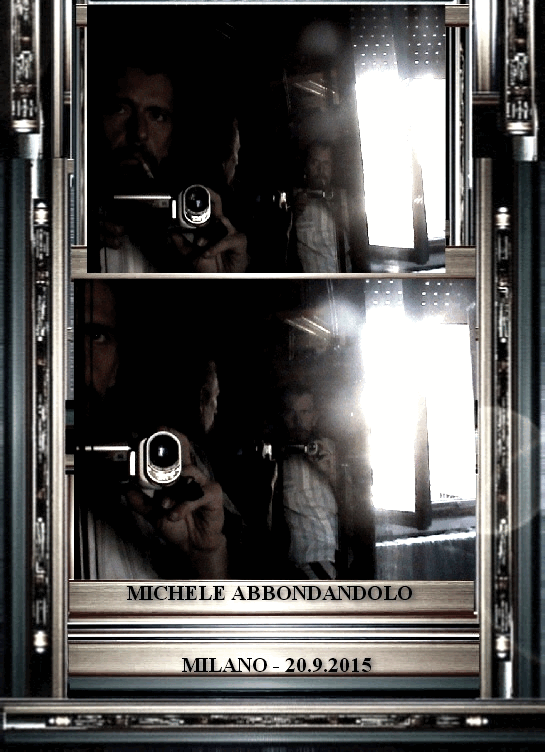


-

- ___Striker

-

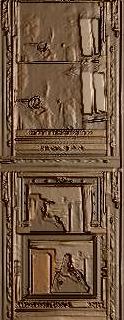









Cholesteatoma after lateral bulla osteotomy in two brachycephalic dogs
.
Schuenemann RM, Oechtering G.
Clinical Department for Small Animals, Faculty of Veterinary Medicine, University of Leipzig, Leipzig, Germany. schuenemann@
kleintierklinik.uni-leipzig.de
Abstract
This report describes a French bulldog and a pug that presented to the authors' hospital following total ear canal ablation (TECA) and lateral bulla osteotomy (LBO), with signs of recurring otitis media and difficulty opening their mouths. The bulldog also had unilateral facial paralysis and sensory deficits of the trigeminal nerve on the ipsilateral side. Computed tomography and MRI scans suggested cholesteatoma in the bulldog, but showed only slight enlargement of the bulla in the pug. Histopathologic examination of samples yielded cholesteatoma in both cases. The authors suspect that development of the cholesteatomas was linked to the TECA/LBO surgery in both cases. Cholesteatomas may occur more frequently than currently thought. Even if only slight changes of the bulla wall are detected on CT, early-stage cholesteatoma should be considered. The narrow anatomic conditions in brachycephalic dogs possibly predispose such breeds to develop cholesteatoma after middle ear surgery because complete removal of all inflammatory and epithelial tissue can be more difficult than in other breeds. To the authors' knowledge, this is the first report of an aural cholesteatoma causing sensory deficits of the trigeminal nerve.......Learn More about Bulldogs.